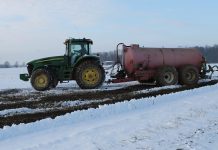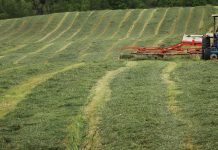One of the basic rules of my incredibly successful one-dog, two-ink pen operation is that if the government wants to give some of my tax money back, I take it.
Depreciation? Thank you. Double declining balance, three-backflips depreciation? Thank you very much.
That simple principle, however, was trampled July 22 when a Senate Ag Committee hearing took a look at the recently passed, farmer-friendly, House climate change legislation.
While the House plan is complex, everyone — Dems and Repubs, cowboys and plowboys, geniuses and (ahem) journalists alike — agree: The ag side of the House plan will net farmers and rural communities billions in the coming decades.
Indeed, recent studies from the U.S. Department of Agriculture, the Environmental Protection Agency and Iowa State University all point to how juicy carbon trading will be for American farmers and landowners.
But that clear message was muddied at the Senate hearing. Several Repub aggies complained farmers would be big losers under cap-and-trade. Leading the charge was Mike Johanns, this year the junior senator from Nebraska, last year the secretary of agriculture.
Johanns’ indignation, according to a Senate speech he gave two days before the hearing, came from “numerous studies… about how cap-and-trade would affect American life…”
Two studies he cited in the speech, one done in 2008 by the Fertilizer Institute and a more recent one by the American Farm Bureau, estimated cap-and-trade’s cost far higher than newer research by USDA, EPA and ISU.
For example, in his Senate speech, Johanns looked past the month-old ISU data to reach back to the outdated Fertilizer Institute numbers to note that cap-and-trade adds “$40 to $80 per acre… in the cost to produce an acre of corn.”
In his mid-June study, Bruce Babcock, an ag economist at Iowa State and director of that university’s Center for Agricultural an Rural Development, pegged the cost of the House plan to Iowa corn and soybean producers at 10 to 20 times less: $4.52 per acre if the carbon in the cap-and-trade scheme is valued, as it is, at $20 per ton.
Moreover, added Babcock, even before that added cost is compared to the added income most Iowa farmers would receive under cap-and-trade, remember that “Iowa corn and soybeans farmers receive approximately $20 per acre in direct payments as part of the 2008 farm bill. In addition, most farmers receive between $5.00 and $20.00 per acre crop insurance subsidies.”
The distinguished professor seems to be reminding Iowa farmers that a.) even before you arrive at agriculture’s bottom line in cap-and-trade, that line is $25 to $40 an acre fatter because of government cash to grow corn and soybeans and, b.) now you get even more of your money back because cap-and-trade carbon at $20 a ton far outweighs its $4.50 an acre cost.
Current Secretary of Agriculture Tom Vilsack drove home that same point in his July 22 Senate testimony.
According to the USDA study, American farmers, he said, will gain “$1 billion per year in 2015-20 to almost $15-20 billion in 2040-50” in carbon payments under the House plan.
Yeah, publicly groused Johanns a moment later, and since trees sequester more carbon than corn, farmers will plant more trees than corn and, in turn, America’s livestock producers will be sucking air by 2050 because of the lack of feed.
Ah, what?
Cap-and-trade is about cleaner air, a market-based method to start to cut greenhouse gas and a way for farmers to make both pay. And it’s leaving the station very soon.
The question is: Do you want to get paid to ride or do you want to be sidetracked in a debate over how many trees there might be in Nebraska in 2050?
Me, too. Show me the money.
2009 ag comm













